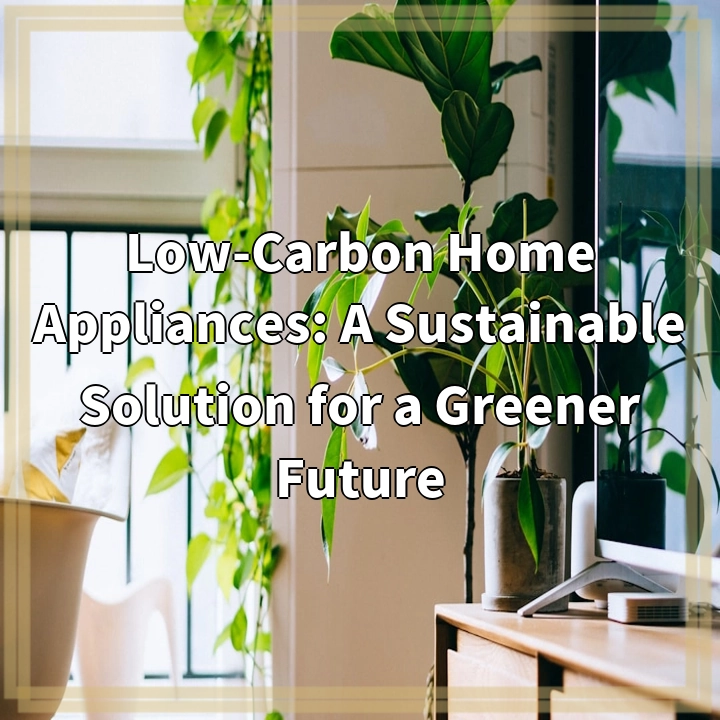
What are Low-Carbon Home Appliances?
Low-carbon home appliances are household products designed to minimize energy consumption and reduce greenhouse gas emissions. These appliances are specifically designed to be more energy-efficient, using advanced technologies and innovative features to consume less power and operate in a more sustainable manner. They play a crucial role in addressing climate change and promoting a greener future.
Real-World Problems Associated with Low-Carbon Home Appliances
1. High Initial Costs
One significant barrier to the widespread adoption of low-carbon home appliances is the higher upfront costs compared to traditional appliances. These energy-efficient products often come with a higher price tag due to the advanced technologies and materials used in their production. This can create a financial challenge for some consumers, especially those with a limited budget or who are not yet aware of the long-term savings that low-carbon appliances can provide.
2. Lack of Consumer Awareness
Many consumers are still unaware of the benefits of low-carbon home appliances and how they contribute to reducing carbon emissions. The lack of knowledge and awareness surrounding these products makes it challenging for manufacturers and retailers to market and sell them effectively. Educating consumers about the environmental and financial benefits of low-carbon appliances is crucial in driving demand for these sustainable alternatives.
3. Limited Availability and Choices
In some regions, the availability of low-carbon home appliances may be limited, making it difficult for consumers to access and purchase these products. Additionally, the variety and choices of low-carbon appliances may be limited compared to traditional appliances. Increasing the availability and diversity of low-carbon appliances on the market is important to provide consumers with more options to choose from and ensure a successful transition towards greener households.
4. Unclear Energy Efficiency Standards
There can be confusion and uncertainty regarding energy efficiency standards for low-carbon home appliances. Different countries or regions may have varying regulations and certification processes, making it challenging for consumers to identify truly energy-efficient appliances. Establishing clear and internationally recognized energy efficiency standards can help consumers make informed purchasing decisions and ensure the reliability and credibility of low-carbon appliances in the market.
In conclusion, while low-carbon home appliances offer a sustainable solution for a greener future, there are still real-world challenges that need to be addressed. Overcoming these hurdles — such as high initial costs, lack of consumer awareness, limited availability and choices, and unclear energy efficiency standards — will require collaborative efforts from manufacturers, policymakers, and consumers to promote and adopt low-carbon appliances on a larger scale.

Solutions for Low-Carbon Home Appliances
1. Government Incentives and Subsidies
The government can play a crucial role in driving the adoption of low-carbon home appliances by offering incentives and subsidies. This could include tax credits or rebates for consumers who purchase energy-efficient appliances, making them more affordable and appealing. Governments can also provide funding for research and development to encourage innovation in this sector and increase the availability of low-carbon appliances in the market.
2. Consumer Education and Awareness
Efforts should be made to educate consumers about the benefits and long-term cost savings provided by low-carbon home appliances. This can be achieved through public awareness campaigns, educational materials, and partnerships between manufacturers, retailers, and environmental organizations. Providing clear and accessible information about energy efficiency standards, environmental impact, and potential cost savings can help consumers make informed choices when purchasing appliances for their homes.
3. Increased Market Accessibility
Manufacturers and retailers should work together to increase the availability and accessibility of low-carbon home appliances. This includes expanding distribution networks and ensuring that low-carbon appliances are readily available in both urban and rural areas. Increasing the variety and choices of these products will also cater to diverse consumer preferences and needs, making it easier for individuals to find suitable options that align with their sustainability goals.
4. International Standardization
Establishing clear and internationally recognized energy efficiency standards for low-carbon home appliances is important to build consumer trust and confidence. Governments, industry associations, and environmental organizations should collaborate to develop and implement standardized labeling and certification systems. This will enable consumers to easily identify and compare energy-efficient appliances, facilitating informed decision-making and promoting the adoption of low-carbon alternatives.
In conclusion, addressing the real-world problems associated with low-carbon home appliances requires a multi-faceted approach. By implementing solutions such as government incentives and subsidies, consumer education and awareness campaigns, increased market accessibility, and international standardization, we can overcome the barriers and accelerate the transition towards a greener and more sustainable future.















